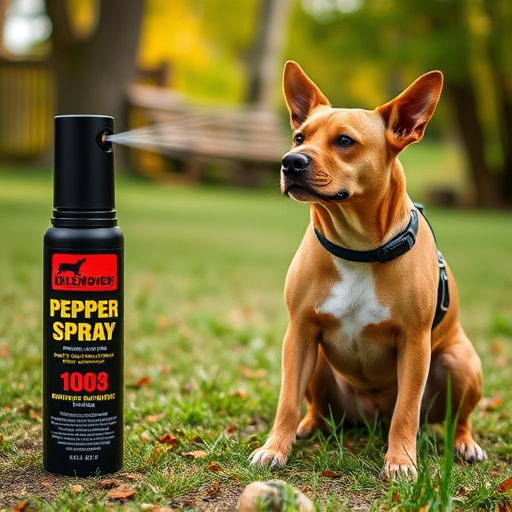When using mace spray for animal control around pets, prioritize safety by wearing protective gear, moving pets to a safe space, and following product instructions precisely. After use, immediately rinse affected areas with warm water and mild soap to neutralize Mace spray and prevent skin irritation. Monitor pets for discomfort and consult a vet if issues persist.
Mace spray, often used for animal control due to its powerful impact, can be a controversial tool. This article delves into the strength of mace spray composition and its effects on pets’ delicate skin. We’ll guide you through safe handling practices, offering techniques to effectively neutralize irritation instantly. Additionally, post-care procedures ensure soothing and protecting your pet’s skin after exposure. Understanding these steps is crucial for responsible use.
- Understanding Mace Spray Composition and Its Impact on Pets
- Safe Handling: Preparing for Application on Pet Skin
- Effective Use Techniques to Neutralize Irritation Instantly
- Post-Care Procedures: Soothing and Protecting Pet Skin
Understanding Mace Spray Composition and Its Impact on Pets
Mace spray for animal control is designed to neutralize and deter aggressive animals, but its composition can have significant impacts on pet skin. These sprays typically contain capsaicin, the active ingredient found in chili peppers, which can cause irritation and inflammation when it comes into contact with sensitive animal skin. When used properly, mace spray can be an effective tool for managing wild animal encounters, but it’s crucial to understand its potential side effects.
Applying mace spray directly to an animal’s fur or skin can lead to temporary discomfort, redness, and itching. In some cases, more severe reactions may occur, especially if the animal has existing skin conditions or is particularly sensitive to capsaicin. To neutralize mace spray on pet skin, immediately rinse the affected area with warm water and mild soap. If irritation persists, consult a veterinarian for appropriate treatment options. Proper handling and application techniques are essential to minimize the risks associated with mace spray use around pets.
Safe Handling: Preparing for Application on Pet Skin
When handling mace spray for animal control, especially around pets, safety is paramount. Before applying any spray, ensure you’ve prepared the area and equipped yourself with protective gear, including gloves and eye protection. This step is crucial to neutralize Mace spray on pet skin effectively while minimizing exposure for both your family and animals.
Start by moving all pets to a safe, enclosed space away from the application area. Then, don protective wear and ensure proper ventilation. When ready, carefully follow the product instructions for application, aiming the spray directly at the target animal while avoiding contact with pet skin or fur. After use, promptly clean any residual spray off your hands and thoroughly wash affected areas on pets to neutralize the Mace spray and prevent potential irritation or discomfort.
Effective Use Techniques to Neutralize Irritation Instantly
Mace spray, when used for animal control, can be an effective deterrent, but its potency also means it’s crucial to employ precise and safe application techniques. To neutralize mace spray on pet skin instantly, start by ensuring a calm environment to prevent panic or further agitation. Quickly rinse the affected area with warm water to dilute the spray residue, being gentle to avoid additional irritation.
For pets with sensitive skin, consider using a mild soap solution for thorough cleaning. Always monitor your pet’s reaction during and after treatment, as individual sensitivities may vary. If irritation persists, consult a veterinarian for specialized advice tailored to your pet’s needs.
Post-Care Procedures: Soothing and Protecting Pet Skin
After using mace spray for animal control, proper post-care is essential to soothe and protect your pet’s skin. The first step is to thoroughly rinse the affected area with warm water, ensuring all remnants of the spray are removed. This neutralizes the active ingredients and prevents further irritation.
You can then apply a gentle, non-irritating moisturizer or pet-specific soothing cream to hydrate and calm the skin. Avoid using any harsh soaps or cleansers as they may exacerbate the situation. Regular monitoring for signs of discomfort or persistent redness is crucial, and if issues persist, consulting a veterinarian for specialized advice is recommended.
Mace spray, when used responsibly for animal control, can be an effective tool. However, understanding its composition and impact on pet skin is crucial for safe handling. By employing proper techniques to neutralize the spray instantly and following post-care procedures, you can ensure your pet’s comfort and well-being. Remember, quick action and proper soothing are key to minimizing irritation.
